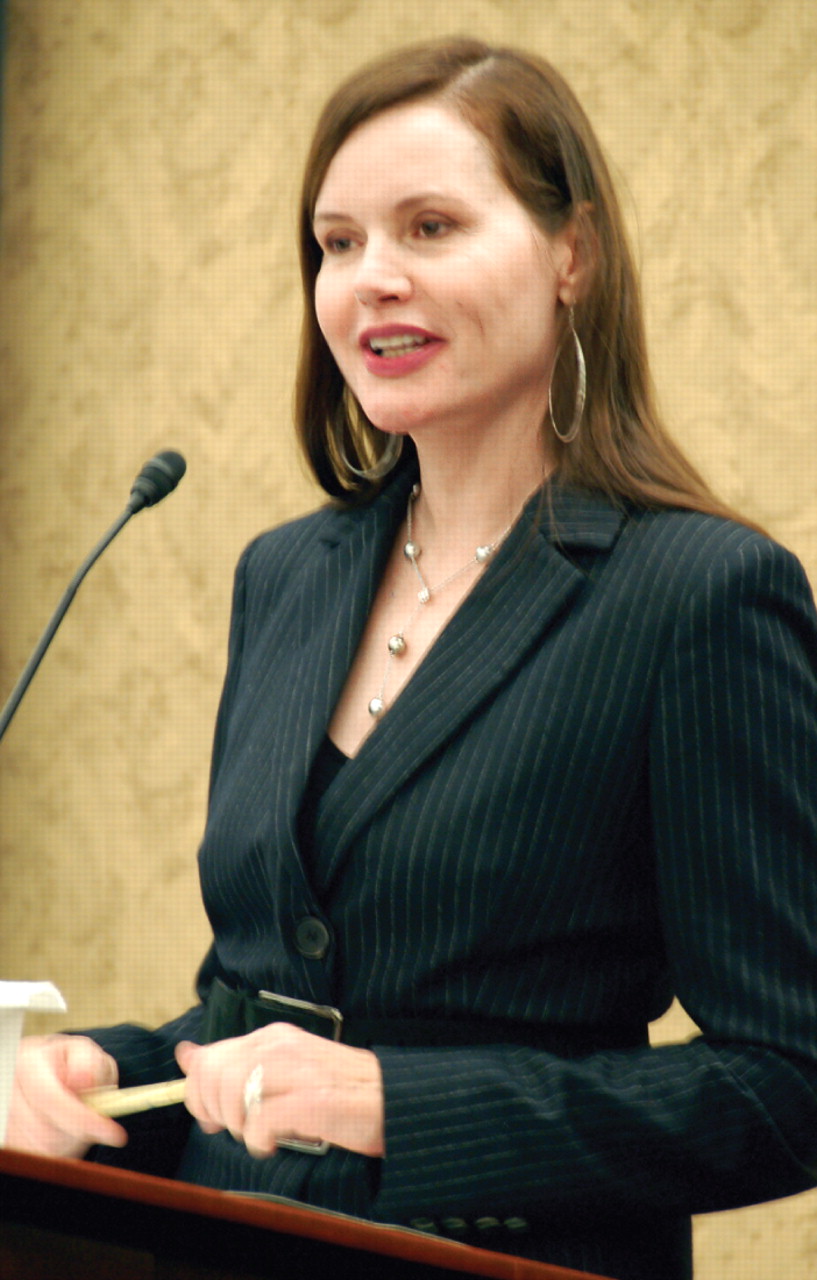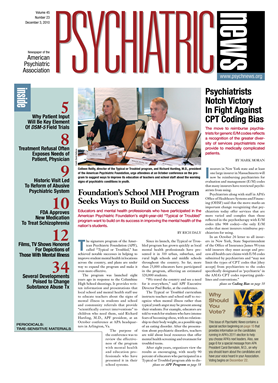The specific mental health consequences of extended exposure to portrayals of unrealistic and unhealthy behaviors of girls and women may not be clear, but some advocates see enough data to cause concern and to take action. A mental health advocacy group that already has helped change Hollywood portrayals of people with psychiatric illness informed Psychiatric News that it will team up with the Girl Scouts to try to reduce the amount of potentially harmful pop-culture messages to which girls and young women are exposed.
A formal announcement of the campaign, including its launch date, will come after finalization of its details.
The nonprofit advocacy group, the Entertainment Industry Council (EIC), was founded by actors and other Hollywood professionals, to work within the film industry to change stereotypical and inaccurate entertainment images of people with mental illness as unusually violent or irreversibly ill. The EIC's efforts—which include presenting its annual PRISM Awards to recognize accurate depictions of mental illness in entertainment industries and providing expert consultants to movie and television studios—have resulted in a growing body of accurate depictions of people who suffer from mental illness, including substance use disorders.
Hollywood studios “found that the more accurate the portrayals were, the more positive the audience reaction was to the production,” Marie Gallo Dyak, vice president of programming and government relations at the EIC, told Psychiatric News.
Specifically, the EIC and the Girl Scouts will work to reduce the pervasive “unhealthy” media images of young women and girls as “hypersexualized,” physically perfect, and superficial. They also will encourage portrayals of girls in age-appropriate attire and as positive characters, along with male characters who value the female characters for more than their appearance.
Current media content includes few strong, healthy role models for girls, said Laurie Westley, senior vice president of public policy at Girl Scouts of the U.S.A., in an interview with Psychiatric News.
That assessment echoes research on inaccurate media portrayals of women and girls, including some studies funded by Geena Davis, the Academy Award–winning actress. One of her studies found that only 10 percent of the people writing and producing movies are women. A national survey by the Girl Scout Research Institute (GSRI) found that 88 percent of girls believe that popular media place “a lot of pressure on girls to be thin.”
The abundance of unhealthy media portrayals could have clinical consequences. Research has linked higher exposure to media portrayals of “hypersexualized” and unhealthy body images of college-aged women to the development of psychiatric disorders, such as eating disorders and depression, according to a 2007 report by the American Psychological Association. The report's authors noted that little research has been done on the impact of exposure to such images on the still-developing minds of younger girls.
Moreover, the media can contribute to both an unhealthy obsession with underweight media figures and a food-focused culture linked to the nation's growing numbers of children who are overweight, according to Judy Shoenberg, senior researcher at the GSRI, at a Capitol Hill event on girls' media images.
The issue also has surfaced in Congress. Rep. Tammy Baldwin (D-Wis.) introduced legislation (HR 4925) last summer to fund an expansion of research on children's portrayals in the media.
The EIC partnership with the Girl Scouts aims to complement the scouts' other recent efforts in this area. The Girl Scouts recently partnered with the National Association of Broadcasters and the National Cable and Television Association to air a series of public-service announcements that encourage girls and young women to “Watch What You Watch” and avoid unhealthy images and portrayals that reinforce negative stereotypes about them.
The continued pop-culture perpetuation of unhealthy images of girls and women requires the existence of viewers who are willing to watch such television, movie, and advertising images. To address the issue from the consumer side, the initiative also seeks to encourage women and girls to stop spending time and money on entertainment or products that feature images that are detrimental to their own health—whether those images are in the traditional entertainment media or in the unfiltered world of online content. Loss of audience will decrease their profitability.
“We saw that with mental illness, where in addition to an increase in the number of accurate depictions, there was an increase in the depth of those portrayals,” Dyak said about the impact of her group's effort.

